Late February 2022
[In real time we are in southern Canada, preparing to canoe the Arctic Drainage. The transition from completing Central America to coming back to the north has kept me so busy I am behind on the blogs! I’ll do my best to catch up on the stories before we head out on the northern waters. But first, some stories about fresh water of the tropics]
“Porque hay aún un continente verde que imanta nuestras brújulas. Un ancho acabamiento de pirámides en cuyas cumbres bailan doncellas vegetales con ritmos milenarios y recientes.”
“Because there is still a green continent that magnetizes our compasses. A wide finish of pyramids on whose summits vegetable maidens dance with ancient and recent rhythms.”
-Rosario Castellanos
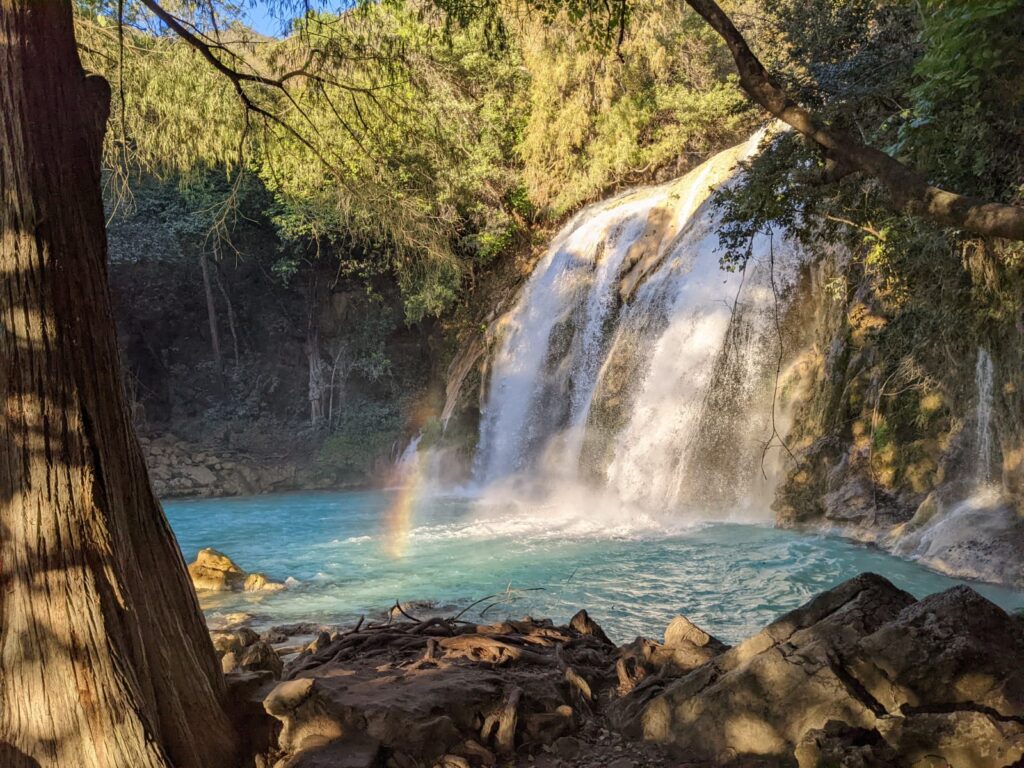
I know I’ve said this about every State in Mexico so far,
and I mean it every time,
Chiapas was my favorite state yet.
Besides the lush landscape and cultural history, low costs are attracting a growing number of travelers and the communities and resources are rising to meet those opportunities and standards. Due to a couple of hot spots and conflict of power between the government and the indigenous groups as well as being a border area, it has a high international advisory warning. We found it easy to steer clear of most of those areas and moved intentionally and with care through the borderlands.
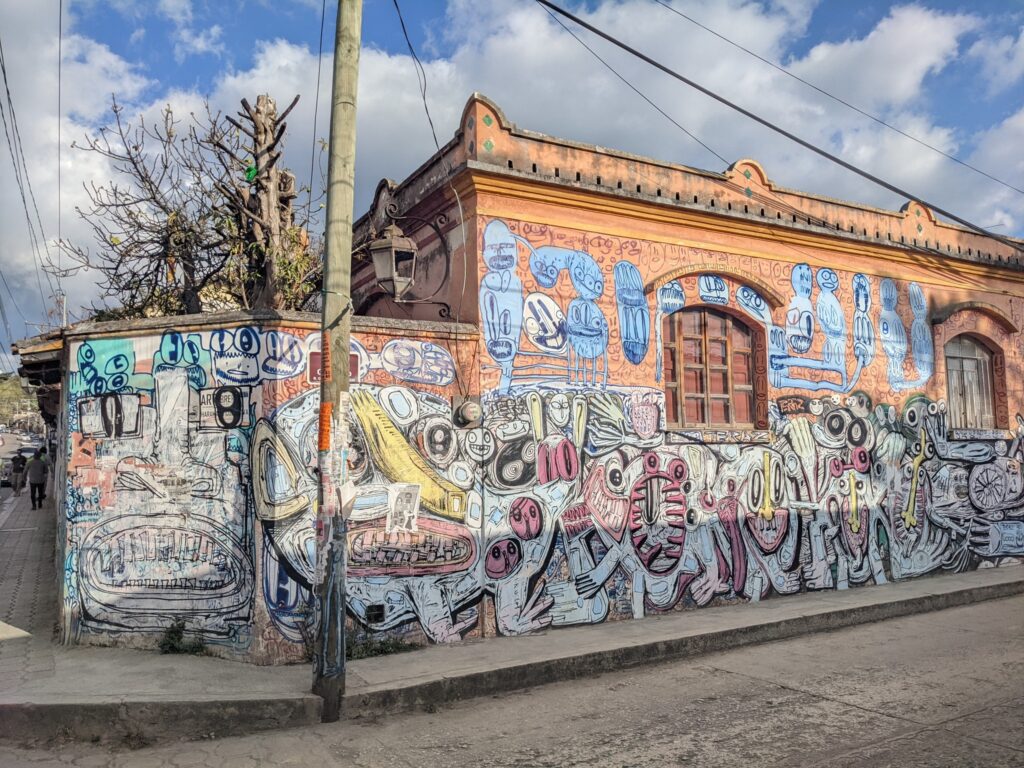
It seems to me, people with long roots in a region, live as an extension of the landscape. Chiapas was no exception. We found people were generally welcoming, though one simultaneously must respect that social issues run as deep as the waters here. After the arid landscapes of northern Mexico, the cenotes, canyons, and underground rivers washed throughout my days and nightly in my dreams, same as the nigglings I picked up on in the conversations that people, like their subterranean rivers, knew how to hold their secrets. Though, overall my impression was that people around the tourist aspiring areas were very welcoming.
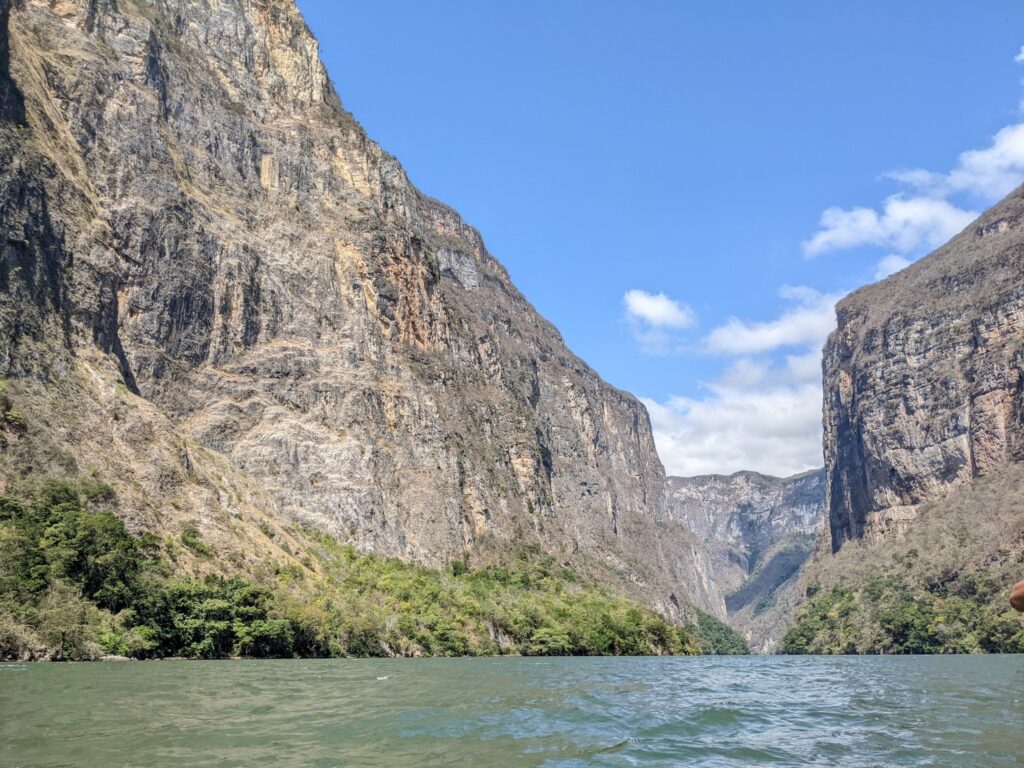
Our first major landmark, Sumidero Canyon, is one of the ‘must visit’ stops in the State. At the mouth of the canyon is the pueblo of Chiapa de Corzo, just outside of Tuxtla Gutiérrez, the capital and largest city of the state. While the colorful little Pueblo Magico has the dubious reputation to have been the first city in the region established as a Spanish strong hold, I enjoyed noting how the indigenous Chiapas people had taken their town back. Reading a bit about the story of the region, I was fascinated by the adaptable and indomitable spirit of both the waters and the people.
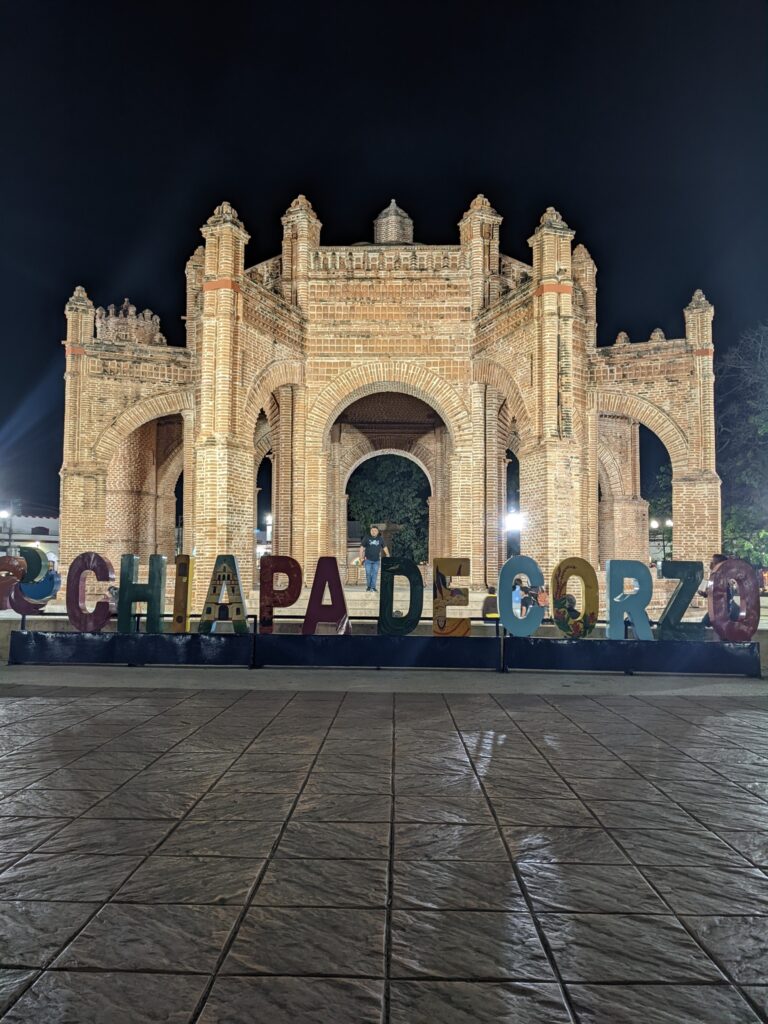
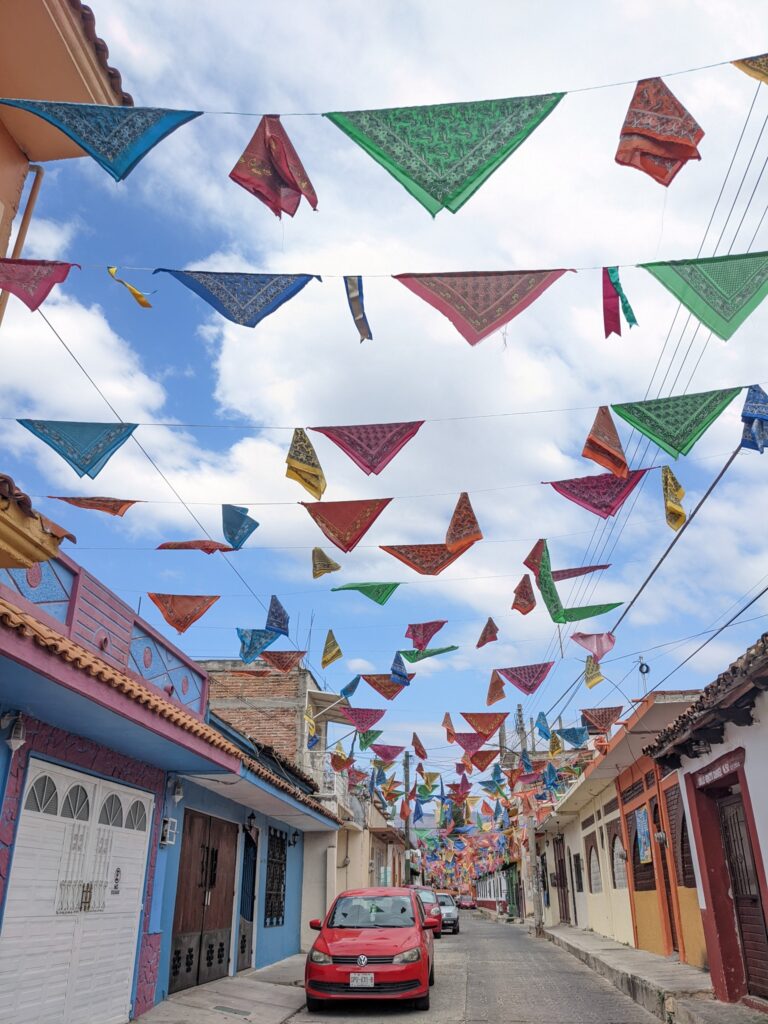 One of the stories which captured my heart was of the Chiapas warriors. Despite having lost their city, a small band held out at what are now the Ruinas de Berlin (named for the archeologist who excavated the site) within the walls of the canyon. Legend has it that after 8 years of withstanding the Spanish, when defeat became imminent, they committed collective suicide, leaping from the canyon rim, 1000 m above the valley floor.
One of the stories which captured my heart was of the Chiapas warriors. Despite having lost their city, a small band held out at what are now the Ruinas de Berlin (named for the archeologist who excavated the site) within the walls of the canyon. Legend has it that after 8 years of withstanding the Spanish, when defeat became imminent, they committed collective suicide, leaping from the canyon rim, 1000 m above the valley floor.
Another of the stories is the flow of water and the canyon itself. On a broad lens, I got to thinking about how the Sumidero Canyon is about 35,000,000 million years old. My beloved Gunnison Gorge in Colorado is 1,700,000,000 billion years old, making this canyon something of a spry young’un and the rearing, malleable limestone walls hold relatively recent memory of a shallow sea.
In the 1960s a small crew of river rats made it up the canyon to ride the waves, which of course got me thinking of other such advocates and witnesses in other such canyons. Katie Lee, Desert Goddess of Glen Canyon in the United States, or Laszlo Berty on the Marañón in Peru.
Until the 1980s this was a wild river. Now it is a placid, crocodile filled body at the top of a series of 4 dams on its way to the Caribbean. We took a day off to motor along with 30 other tourists down to the first dam. I wondered how the crocs got up there and how they deal with the travel limitations presented by the dams.
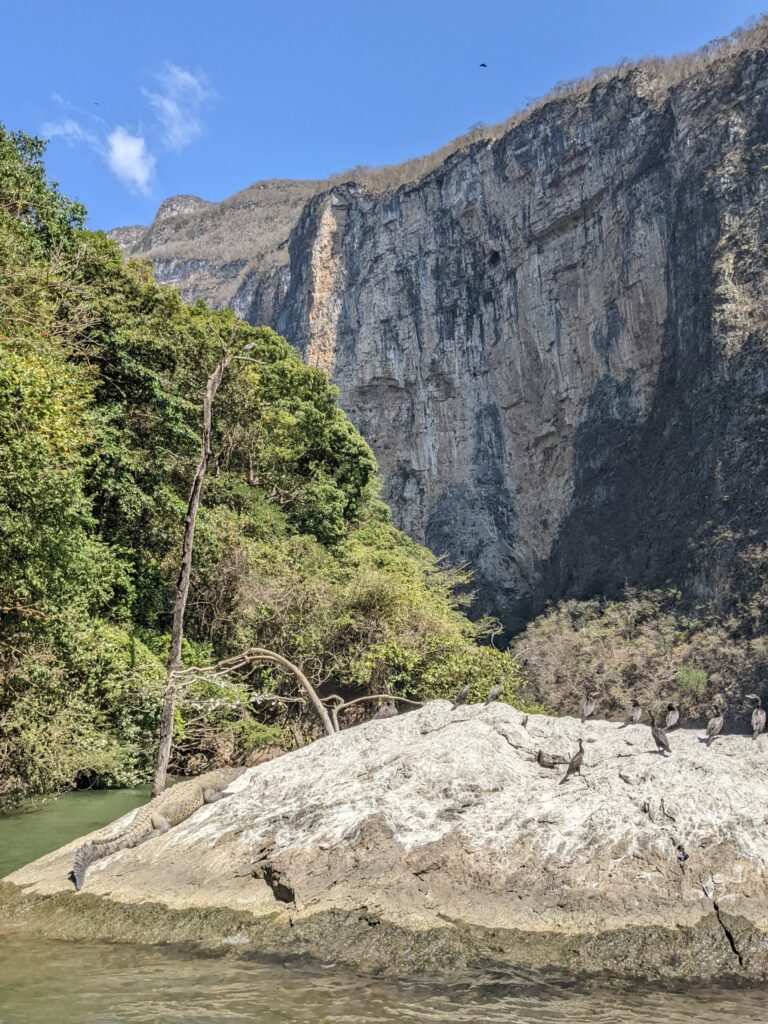
We were on one of the 5 Chiapa community run tour options who depart from 2 docking points. Seeing how the community manage resource distribution (random folks on the street are excited to deliver you to one of the tour operators so they get a percentage, then the children and elders vending trinkets along the dock, families and young adults running food stalls, community officials managing the tour bookings, and the men running the boats.)
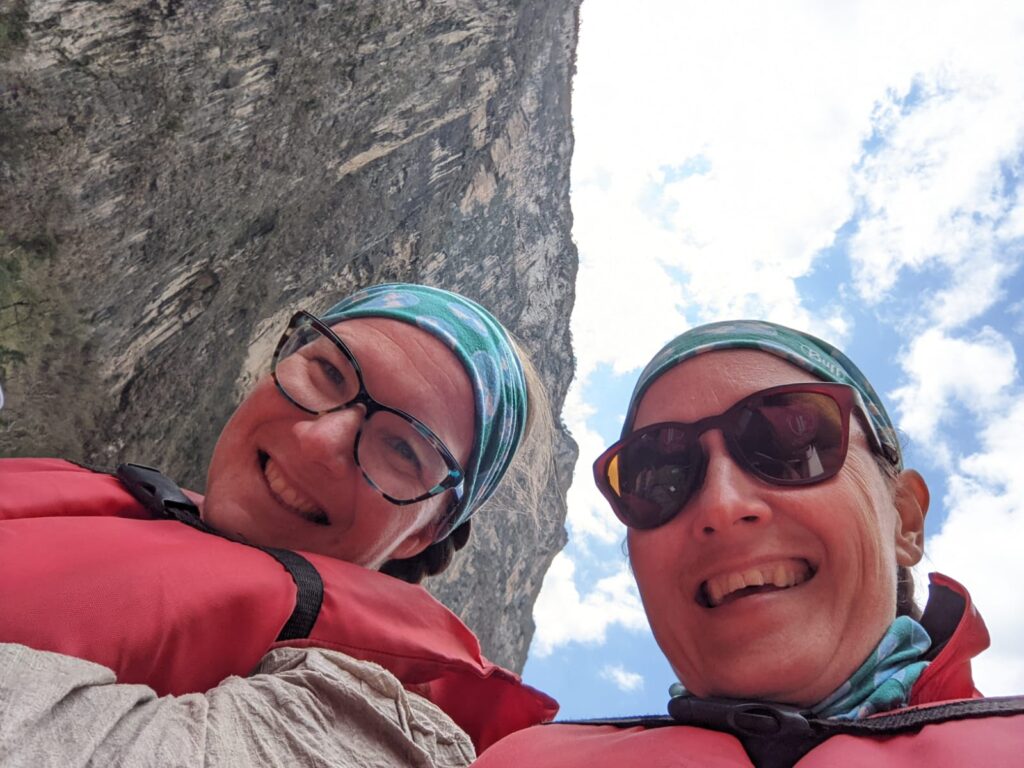
Once past the highway bridge and sewer canals dug from the residences to the river, we entered the canyon, where there were crocodiles sunning themselves, spider monkeys in the trees, and an owl tucked into a fissure behind a cactus. There is a grotto in the canyon wall where the people have tucked a Virgin Mary statue and they have an annual floating mass to worship.
When we visited, the surface was covered by a mass of floating trash. Indeed, they scoop out 5000 tons of trash from this portion of the river annually. The fumes from the twin engines on our boat wafted across our noses. I thought of the price we extoll to know and love a place. How can I cast my weight toward some balance of return to the cost of forging connection? As Rosario Castellanos, a poet who spent much of her life in this region wrote,
“Matamos lo que amamos. Lo demás no ha estado vivo nunca.”
[“We kill what we love. The rest has never been alive.”]
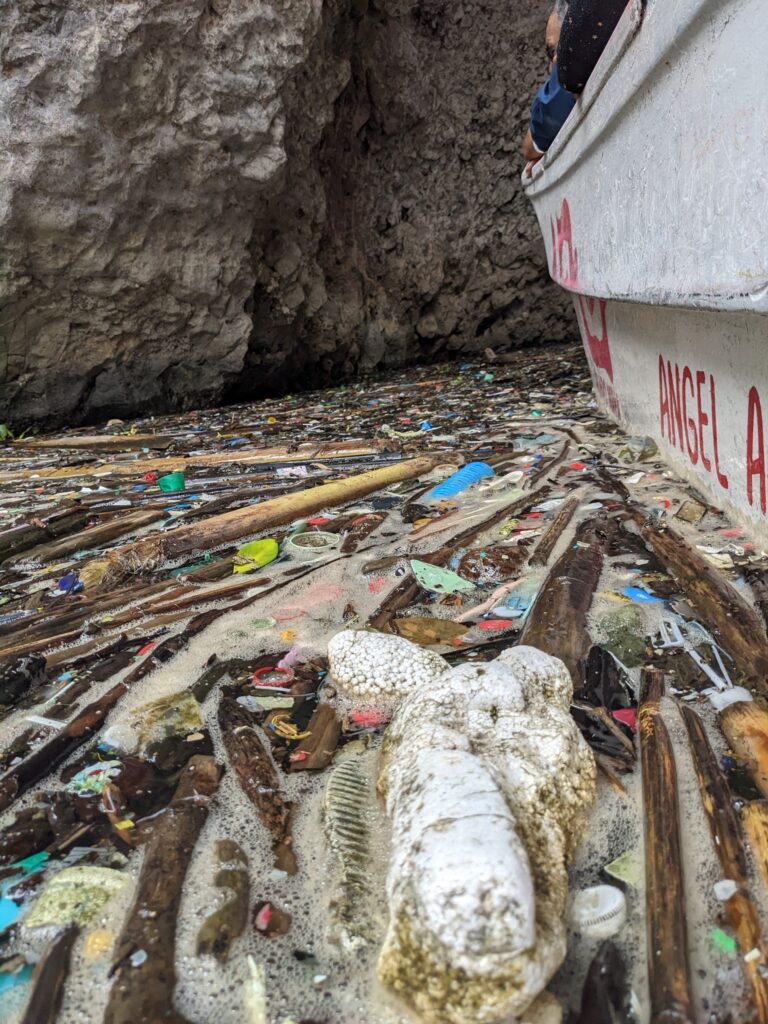
On a climb out from the area the next morning we stopped by “Cascada El Chorreadero” a waterfall birthed from the mouth of a cave, whose waters destined to join the flow. On a Tuesday morning, we had the place to ourselves for almost an hour. The women of the community who live here and manage the grounds were just gathering and chatting, one hurried over to collect the community fee before returning to the event of their all sharing an orange.
I hear folks complain about being “nickel and dimed,” in Mexico. I feel frustrated with it myself often enough. This stems, I think, from us thinking we are having a ‘wilderness’ or ‘remote’ experience, when in fact we are visiting someone else’s home.
As it played out in this instance, “35 pesos,” she said.
“You said 25 pesos?” I asked, nodding my head at one of the many hand painted signs around the entrance.
“That’s what I said, 25 pesos,” she grinned.
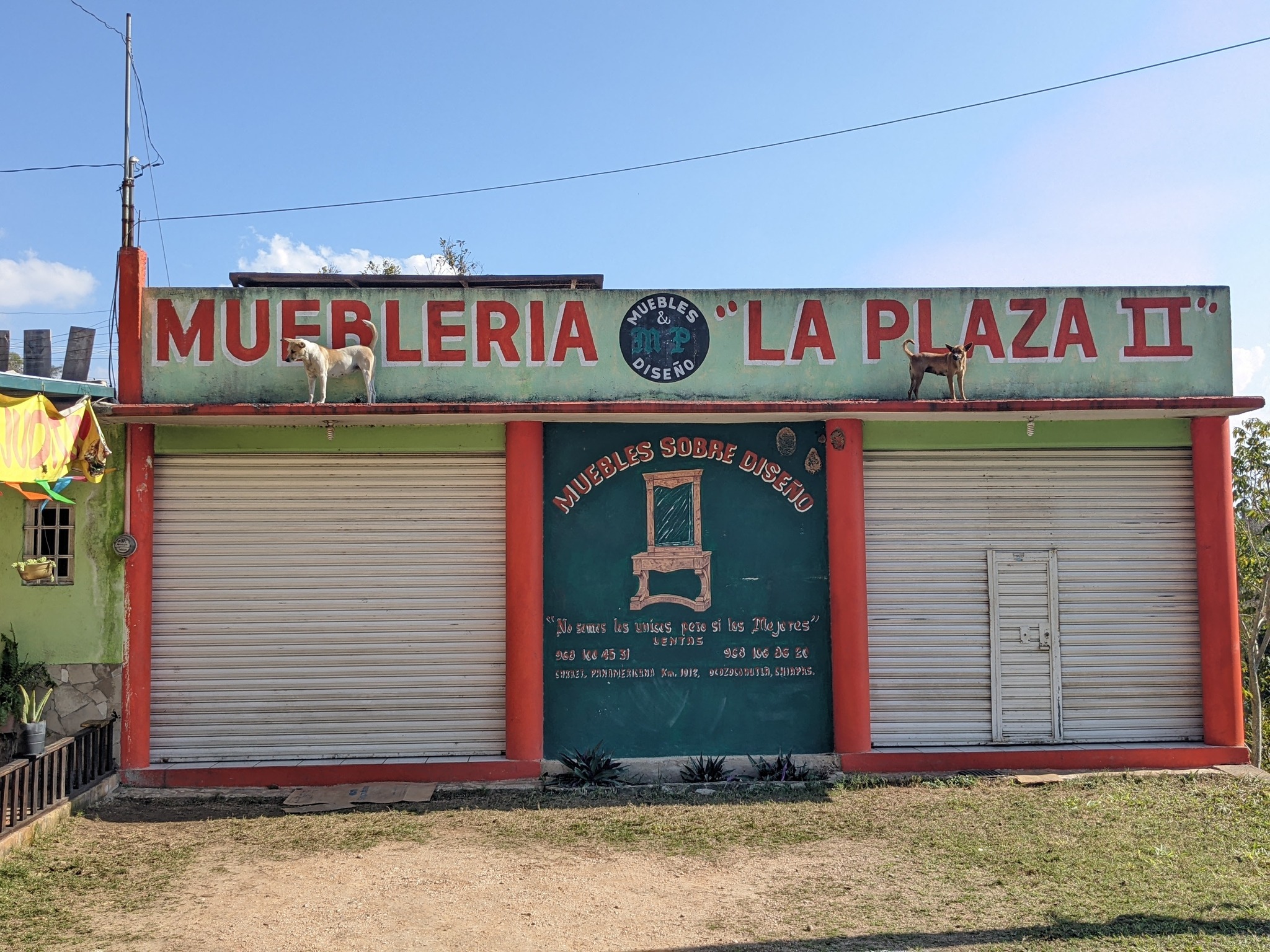
There is no shame in their demeanor or behavior because honestly, ‘white tax’ is a very real thing and it is usually about 10-20% above normal price. As I am coming to understand it, the behavior is mirror to privilege of travel justifying itself with, “Well, they need our money.” Thus, it’s a chicken or the egg debate who is responsible for their seeing us as cash cows.
Further in defense of the white tax, most of us don’t understand the intricate ways communities interact and support each other. As a culturally curious Spanish speaking white woman, I often get feedback as to how many of my country people don’t speak Spanish. Something I’ve heard several times when trust is established in a conversation and they feel they can be so direct is the comment, “ni saludan!”
I have to explain that in my country, we do not greet one another as regularly as people do here. Nor do most of us understand outdoor spaces to be ‘home.’ So, while to them, we walk through the middle of their house, staring at our phones for directions rather than greeting and courteously asking for directions or passage we are out here looking silly trying to ‘do our own thing’. So, they mark up the prices.
In turn, if you know exactly what you are after, what the prices are, and know how to start with a greeting and apology and level your asks in the respected way, they have no qualms helping you get to it. Even if it means sending you off to buy from another business. Even if it means closing up their shop or asking a neighbor to watch it while they walk you there, they will because as long as the money is being spent in the community, most folks believe they will all benefit.
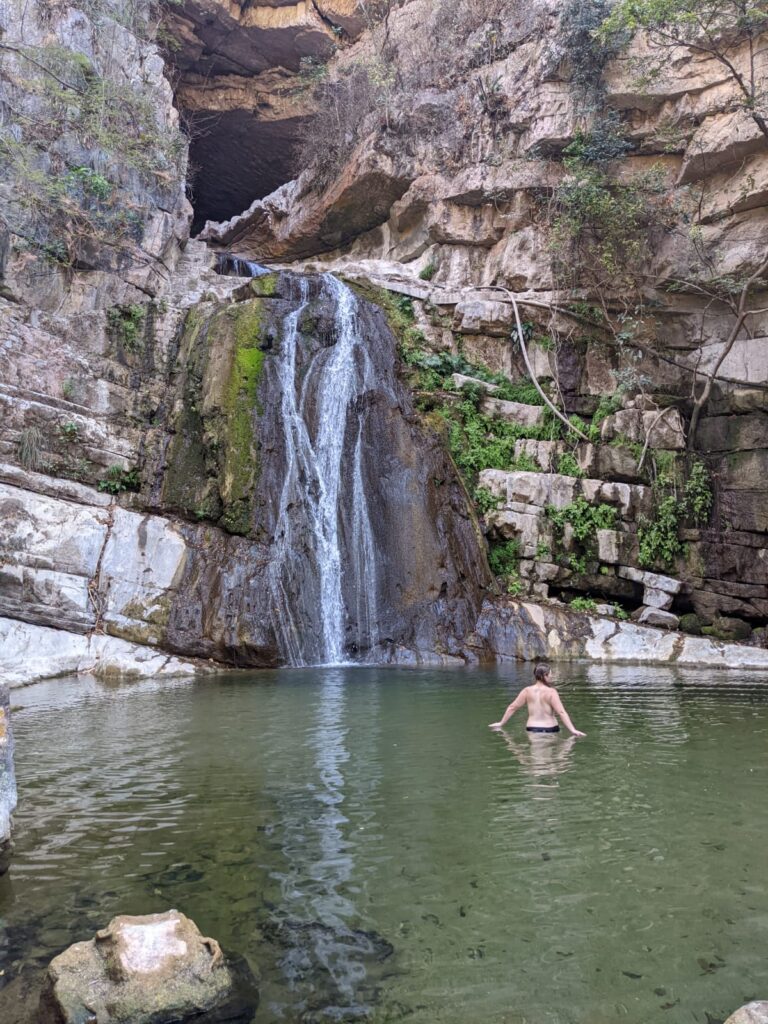
After a refreshing dip in the falls we resumed climbing. 10 km on, a road crew dropped a tree on the ‘libre‘ (the narrow, winding, but free to drive on highway) right in front of us. It wrecked my heart and we hopped on ‘la cuota‘ (the straight toll road, much more graded, shouldered, and higher velocity) up to San Cristobal de las Casas. I’d seen it was mostly under construction, which meant we mostly had a lane to ourselves, except when we shared it with heavy machinery who seemed not at all surprised nor troubled by us.
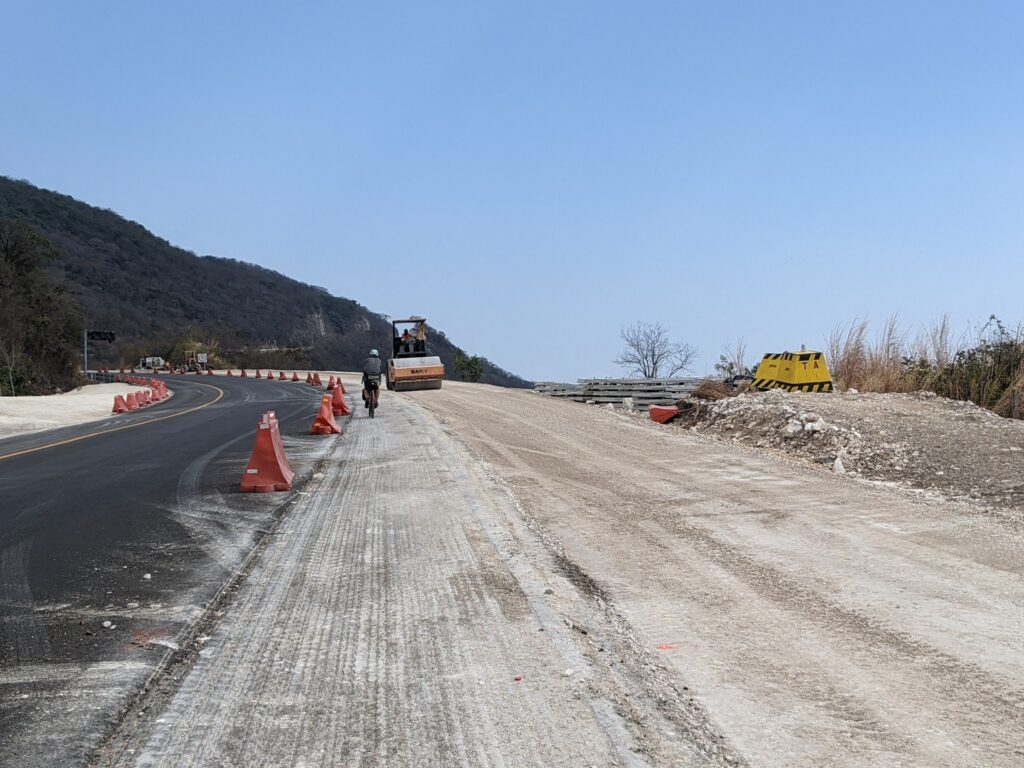
At one point while riding past, I looked at one of the work sites, where a man lay splayed asleep in the seat of his bulldozer, bottom of his bulging belly a crescent under his shirt. Behind him on the valley floor, a huge fire burned. It looked like a dump but from the thick black smoke we knew it was tires. Often enough, the rest of North America sends waste we cannot properly dispose of down to Mexico to be burned. From paint byproducts and other chemical waste to tires. That evening was a beautiful sunset as the full moon rose. Blood red smog filled the valley out of which we laboriously climbed.
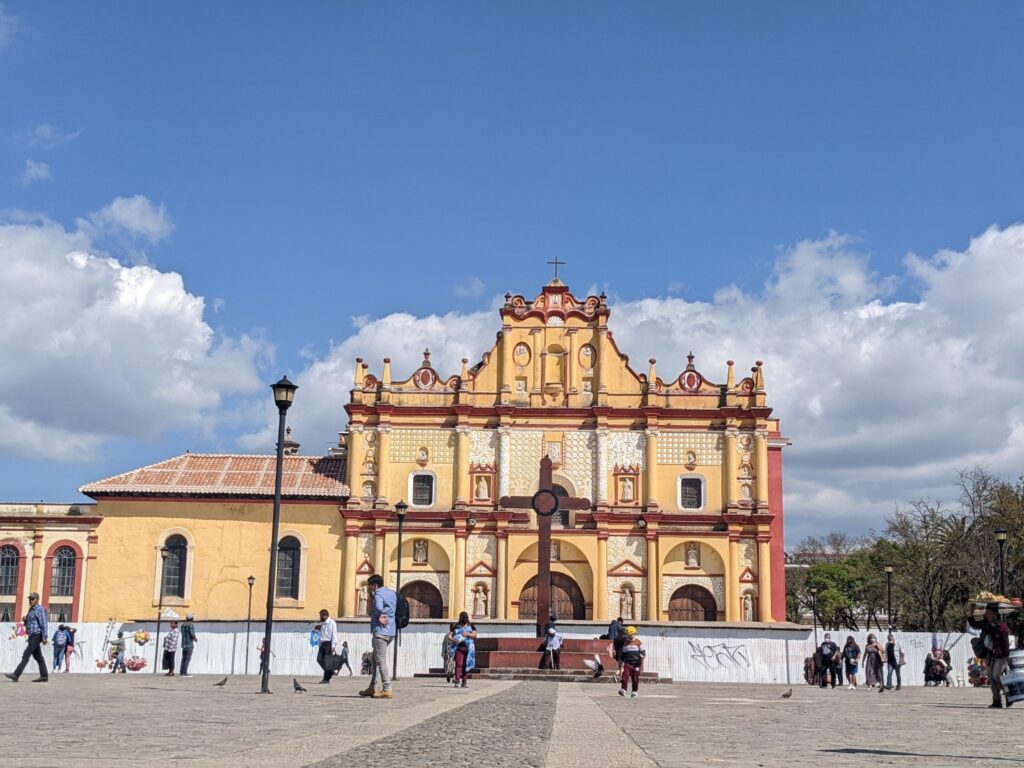
We stopped in San Cristobal de las Casas for a few days and my long-time mentor and friend, Joey Shonka scooted down from the Yucatan where he is working on his next book to catch up. He spent 3 days cooking for us (made a huge birthday dinner with all my favorite things) and took me for a spin around some of the uniquely tourism oriented indigenous communities in the hills around the city.
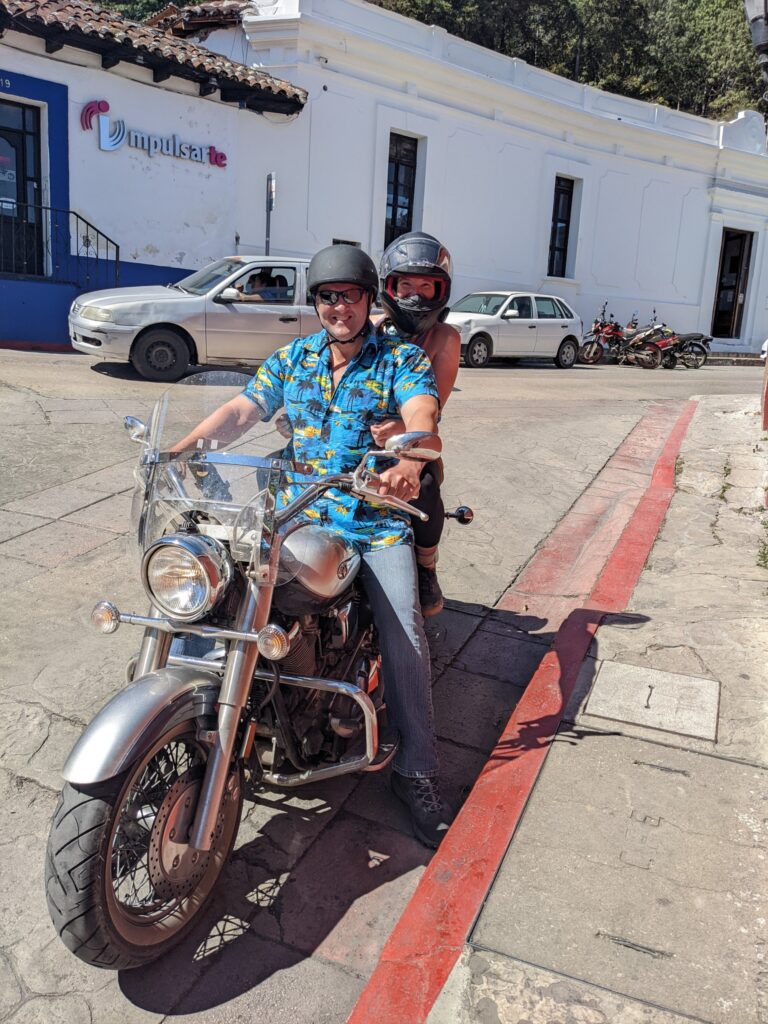
We visited the Catholic Church in Chamula (let’s just say, there are no cameras or pews inside but there IS hay, alcohol, and chicken sacrifices). Then motored through the rich fields and valleys to Zinacantan (from Nahuatl language, the ‘land of the bats’). We ambled through the church and then he meandered off to find a perro callejero to give the leftovers from our birthday meal.
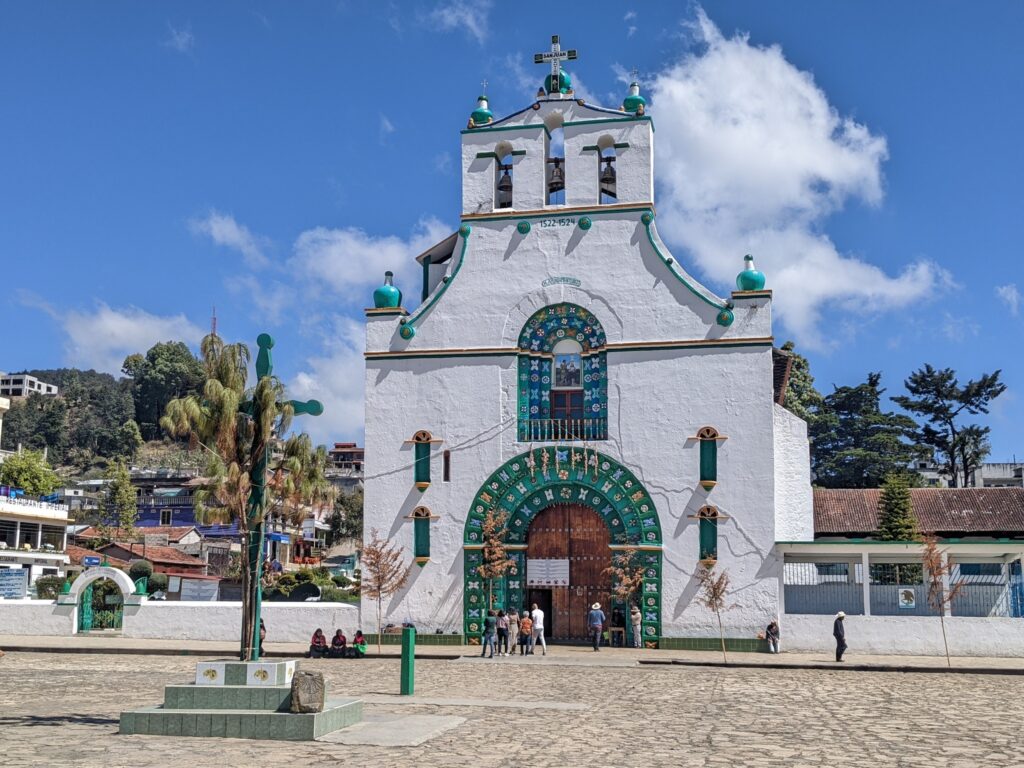
Meanwhile, I had heard about the textiles work of the Tzotzil Mayan women. Packing space is at a premium when human powered, but I wanted one piece of fabric work to bring home for my mom’s birthday in May. Two young Tzotzil girls led me to one of the collectives. These photos were taken with permission. I spent some time in the cool of the shade with the women, inspecting the fabrics, talking life, faith, and technical skills. I got to ask the questions I’d been carrying around: at what age can young fingers begin this work? The 4 year old was the most earnest, coming to hand me small embroidered flowers one at a time while we talked. They showed me the various works, how long each takes. All I could do was admire and be humbled to realize that, in their skill sets, I am about as capable as a 6-7 yo girl.
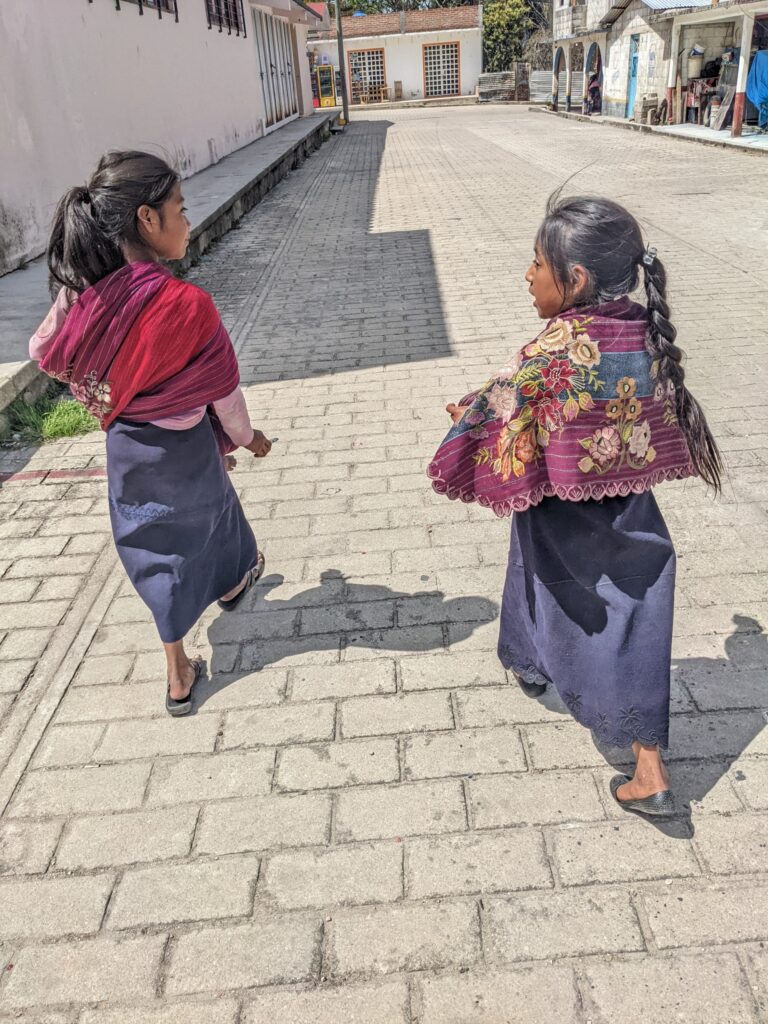
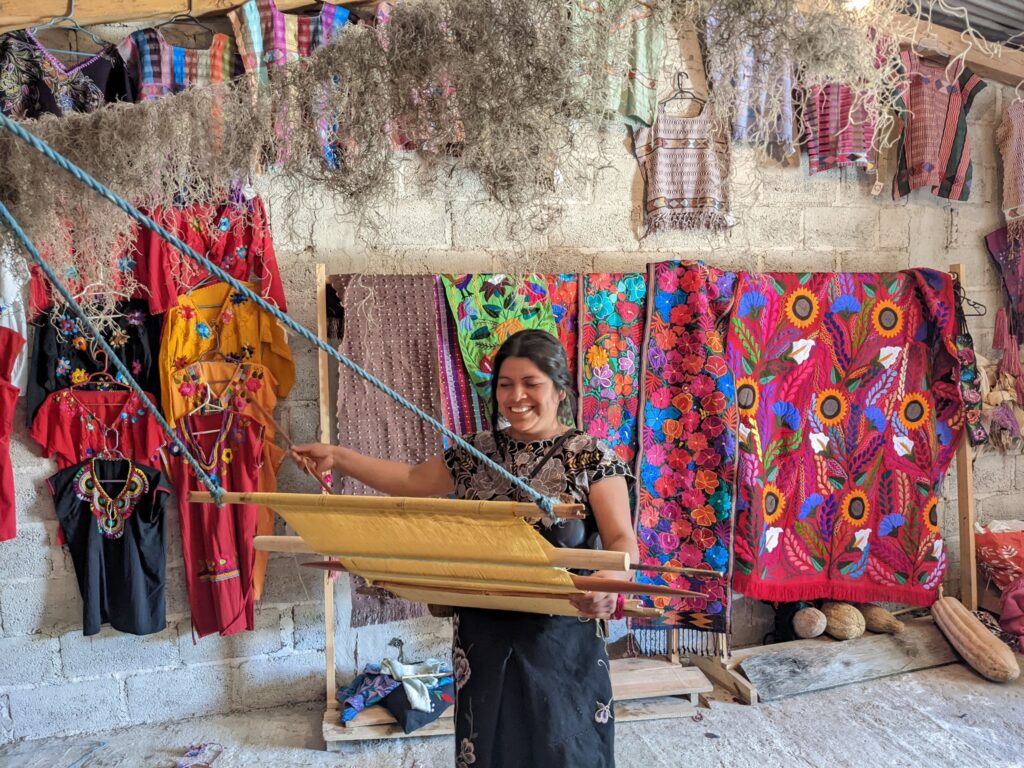 While in the area we also visited El Arcotete where people high-lining, climbing in the caves, picnicking, dog walking. Neon and I liked ambling up to the Iglesia de Guadalupe to have our afternoon check-ins and people watch the groups running the stairs, practicing capoeira, and having hippie drum circle dance parties.
While in the area we also visited El Arcotete where people high-lining, climbing in the caves, picnicking, dog walking. Neon and I liked ambling up to the Iglesia de Guadalupe to have our afternoon check-ins and people watch the groups running the stairs, practicing capoeira, and having hippie drum circle dance parties.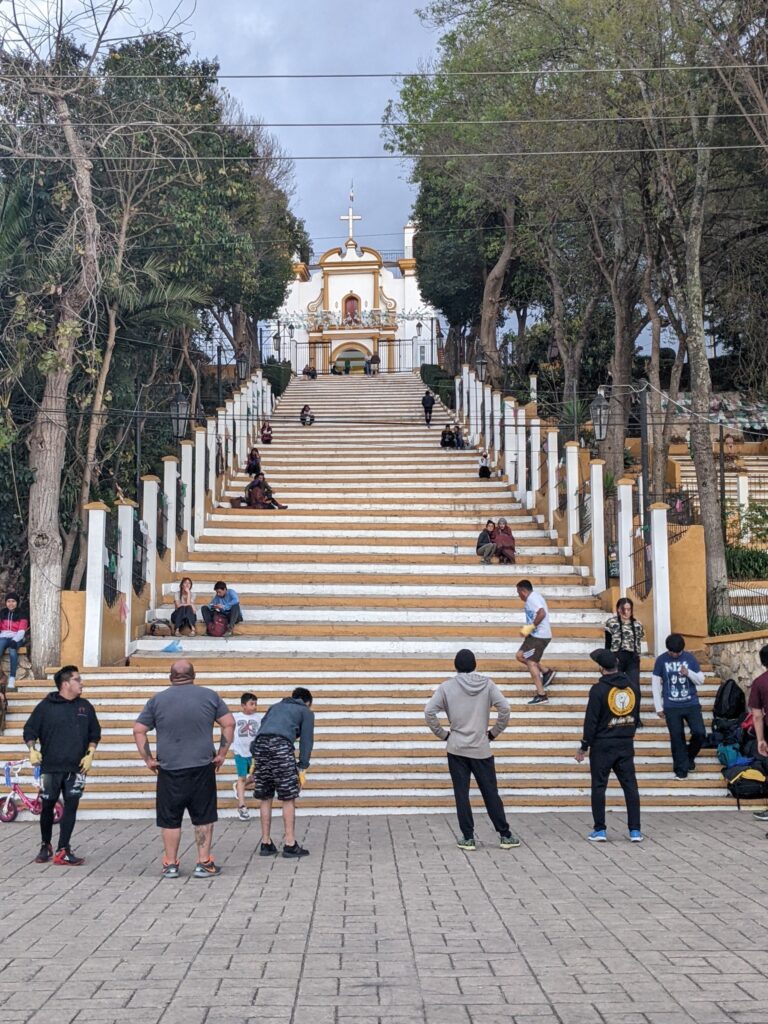
We felt ready for the final stretch to say goodbye to Mexico.
For now.
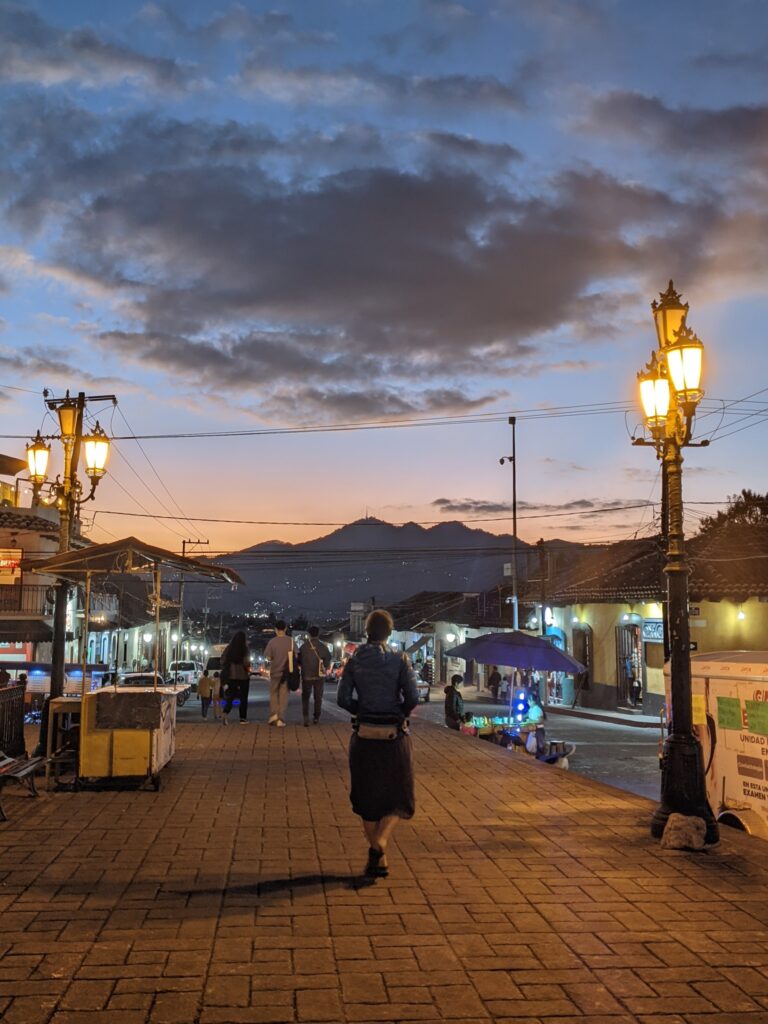
How to get involved:
-Contribute and join the journey with monthly support on Patreon.
-Make a 1 time gift via PayPal
(All proceeds go to the Odyssey and at least 10% is given back to communities along the way)
-Subscribe to receive weekly stories at the bottom of page here.
-Like and Follow on Facebook.
-Follow on Instagram.
-Subscribe on YouTube.
-Follow on Twitter.






Comments (2)
Hola Fidgit y Neon.
I heard from POD that you stopped in Denver on your way to Banf. I missed you!
I was planning to give you a cooking tent!
Bueno ahora sobre Chiapas!! Mi Estado favorito. San Cristobal de las Casas, Pueblo mágico me maravillé que en medio de la jungla chiapaneca haya una ciudad con un clima tan fresco debido a la altura.
Fui con dos hermanas y un cuñado y pasamos dos noches en la selva lacandona. La cacofonía selvática llego a ser una sinfonia melodica!
Suerte en su última etapa! Espero verlas pronto.
Hola Betty!
La verdad es que en el momento estamos en Fort McMurray, Canada. Solo yo pasé sin mucho noticias por Salida por unos dos horas para verla POD por su cumpleaños mientras que estuve en rumbo hacia el aeropuerto para irme a Canadá. Disculpa que no nos vimos, pero si espero juntarnos cuando no tengo tanto prisa!
That is so thoughtful that you found us a bug shelter and I’m very sorry i did not communicate or coordinate better. ??
Los blogs me cuestan tanto en escribir y editar solita que muchas veces salen unos semanas o meses retrasados.
Pero, desde cualquier esquina del mundo en cual escondo, te mando ABRAZOTES!!!